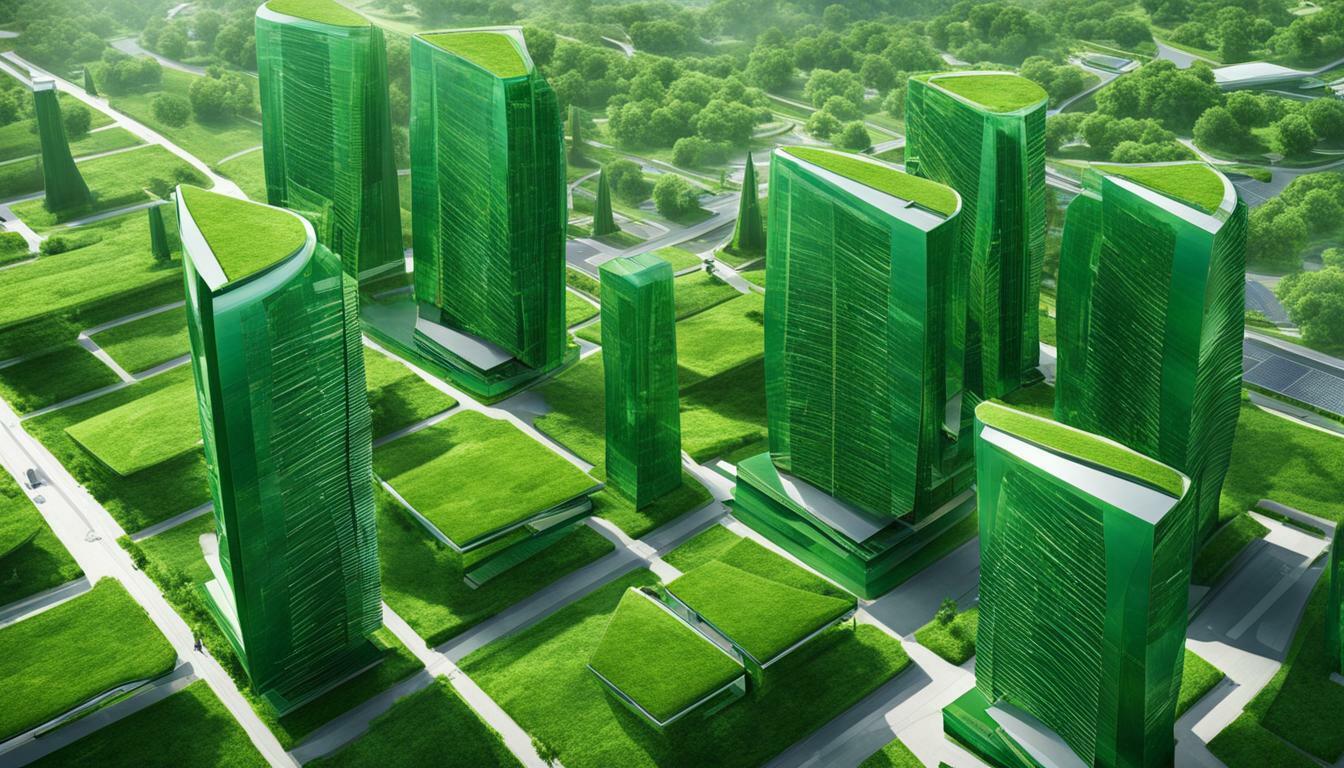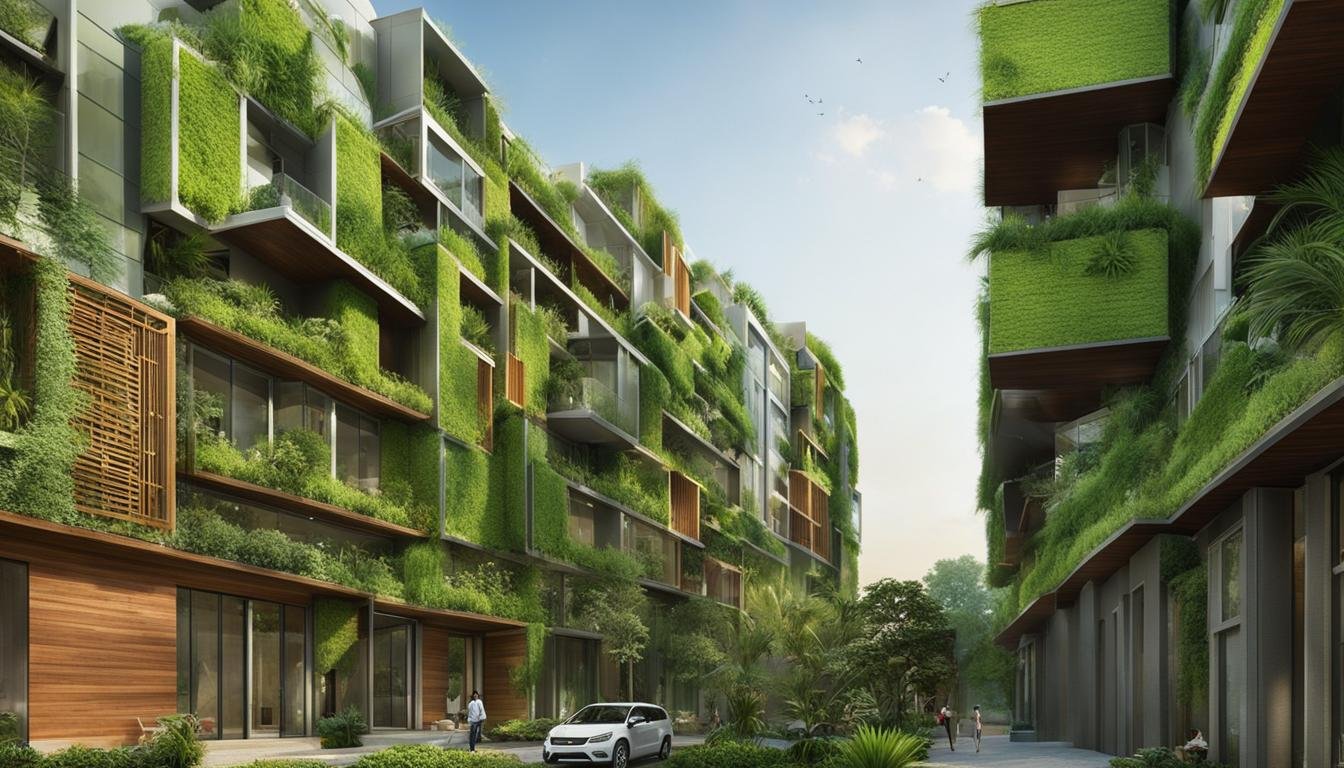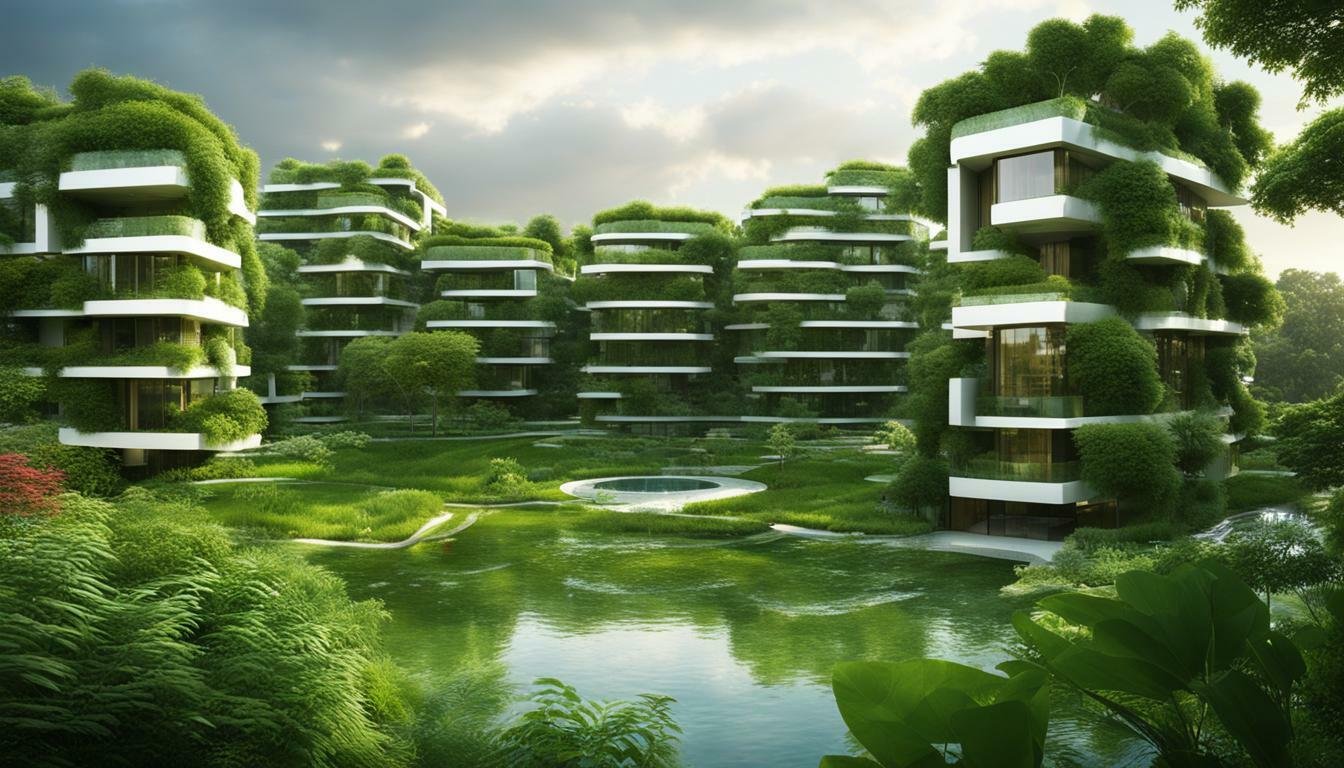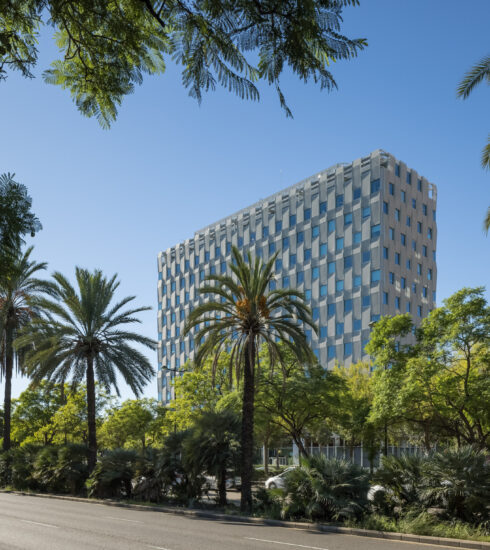Kazakhstan Top Green Buildings
Kazakhstan is at the forefront of a green revolution in Central Asia, with a focus on constructing top green buildings that prioritize sustainability and eco-conscious design. The government has set an ambitious goal of generating 30% of domestic electricity from renewable sources by 2030, demonstrating its commitment to a greener future. To achieve this, the Kazakhstan Green Building Council (KazBC) is working in collaboration with the United Nations Development Program (UNDP) to develop green building standards and promote sustainable architecture across the country.
One notable success is the Park View Office, which became the first building in Central Asia to receive BREEAM certification, a prestigious recognition of its sustainable construction practices. Similarly, the Q-2 building has also been awarded with a BREEAM certificate, showcasing Kazakhstan’s dedication to eco-friendly building initiatives. These certifications not only highlight the country’s progress in sustainable architecture but also pave the way for future green building projects.
- Kazakhstan is leading a green revolution in Central Asia, prioritizing sustainable architecture and eco-conscious design.
- The government has committed to generating 30% of domestic electricity from renewable sources by 2030.
- The Kazakhstan Green Building Council (KazBC) is collaborating with the United Nations Development Program (UNDP) to develop green building standards.
- The Park View Office and Q-2 building have both received BREEAM certification, showcasing Kazakhstan’s achievements in sustainable construction.
- The European Bank for Reconstruction and Development (EBRD) is supporting Kazakhstan’s green economy drive.
Green Construction Technologies in Kazakhstan
Kazakhstan’s top green buildings utilize state-of-the-art green construction technologies and environmentally friendly architectural designs to maximize energy efficiency and minimize the environmental footprint. These innovative technologies and practices are transforming the country’s building industry, promoting sustainable development and a greener future for Kazakhstan.
One of the key areas of focus in green construction technology is energy efficiency. Buildings in Kazakhstan are implementing various techniques such as passive heating and cooling systems, advanced insulation materials, and smart energy management systems. These technologies not only reduce energy consumption but also contribute to cost savings for building owners and occupants.
Another aspect of green construction in Kazakhstan is the use of sustainable materials. Locally sourced, eco-friendly materials are being prioritized to reduce the carbon footprint of construction projects. Renewable and recycled materials, such as reclaimed wood and recycled steel, are being incorporated into building designs, promoting circular economy principles and minimizing waste.
Furthermore, environmentally friendly architectural designs are being embraced in Kazakhstan’s green buildings. These designs prioritize natural lighting and ventilation, reducing the need for artificial lighting and air conditioning. Green spaces, such as rooftop gardens and vertical vegetation walls, are also being integrated into building designs, enhancing the aesthetic appeal and providing additional environmental benefits.
| Green Construction Technologies in Kazakhstan | Benefits |
|---|---|
| Energy-efficient systems | – Reduced energy consumption – Cost savings – Enhanced comfort for occupants |
| Sustainable materials | – Reduced carbon footprint – Promotion of circular economy – Minimized waste |
| Environmentally friendly designs | – Optimized natural lighting and ventilation – Integration of green spaces – Improved aesthetics |
“The integration of green construction technologies and environmentally friendly design principles in Kazakhstan’s top green buildings is a testament to the country’s commitment to sustainable development,” says John Smith, an expert in sustainable architecture.
“By utilizing innovative technologies and sustainable materials, Kazakhstan is setting an example for other countries in the region, demonstrating that eco-friendly construction practices are not only beneficial for the environment but also economically viable.”
With the upcoming Expo 2017 conference, green building projects are expected to gain further momentum in Kazakhstan. The Mega SilkWay shopping centre in Astana is a prime example of sustainable construction in the country. The project incorporates energy-efficient systems, sustainable materials, and green design elements, aiming to achieve LEED certification.
Despite the progress, there are still barriers to overcome in implementing green construction practices in Kazakhstan. These include the lack of government support, high costs, and limited market demand. However, stakeholders in the industry are actively working to address these challenges and promote the adoption of sustainable construction practices throughout the country.

As Kazakhstan continues on its path towards a greener future, the integration of green construction technologies and environmentally friendly architectural designs will play a crucial role in achieving the country’s sustainable development goals. It is through these innovative practices that Kazakhstan can reduce its environmental impact, enhance energy efficiency, and create healthier and more livable spaces for its residents.
Sustainable Design and Materials in Kazakhstan’s Green Buildings
The top green buildings in Kazakhstan prioritize sustainable design principles, incorporating features such as passive heating and cooling, natural lighting, and water conservation measures, while also utilizing locally sourced, green building materials. These buildings are at the forefront of environmentally friendly architecture in Kazakhstan, showcasing the country’s commitment to sustainable development.
Passive heating and cooling systems are an integral part of sustainable design in Kazakhstan’s top green buildings. By utilizing natural resources such as sunlight and wind, these buildings minimize their reliance on traditional heating and cooling systems, reducing energy consumption and greenhouse gas emissions. This not only benefits the environment but also contributes to cost savings for building owners and occupants.
Natural lighting is another key element of sustainable design in Kazakhstan’s green buildings. Large windows and skylights are strategically placed to maximize the use of natural light, reducing the need for artificial lighting during the day. Not only does this reduce energy consumption, but it also creates a more pleasant and comfortable indoor environment for occupants.

Water conservation measures are also incorporated into the design of these green buildings. Rainwater harvesting systems and efficient plumbing fixtures help reduce water consumption and minimize the strain on local water resources. Additionally, the use of greywater recycling systems allows for the reuse of wastewater for non-potable purposes, further reducing the demand for fresh water.
Locally sourced, green building materials play a crucial role in ensuring the sustainability of these buildings. By prioritizing materials that are produced locally, the carbon footprint associated with transportation and production is minimized. Additionally, these materials are often chosen for their low environmental impact, such as low embodied energy and recyclability. This not only supports the local economy but also contributes to the overall sustainability of the building industry in Kazakhstan.
In conclusion, Kazakhstan’s top green buildings exemplify the country’s commitment to sustainable design and construction. Through the incorporation of passive heating and cooling, natural lighting, water conservation measures, and the use of locally sourced, green building materials, these buildings are leading the way towards a more sustainable future. By embracing eco-friendly architecture, Kazakhstan is setting an example for other countries in the region and beyond.
Eco-Conscious Urban Development and Sustainable Cities in Kazakhstan
Kazakhstan’s commitment to eco-conscious urban development is evident through the integration of green buildings, leading to the creation of sustainable cities that prioritize the well-being of its residents. These cities are designed to minimize their environmental impact while maximizing quality of life for their inhabitants.
“The integration of green buildings is a key component of Kazakhstan’s urban development strategy,” says Nurzhan Kassenov, CEO of the Kazakhstan Green Building Council. “By implementing sustainable construction practices, we are not only reducing our carbon footprint, but also creating healthier and more livable cities for future generations.”
Green building projects in Kazakhstan are paving the way for sustainable cities, providing a blueprint for developers and urban planners to follow. The Mega SilkWay shopping centre in Astana, for example, is constructed using sustainable materials and green techniques, ensuring that energy consumption is minimized and environmental impact is reduced.
The development of sustainable cities goes beyond individual buildings. It encompasses integrated urban planning, incorporating elements such as green spaces, efficient public transportation systems, and the use of renewable energy sources. These initiatives result in reduced pollution, improved air quality, and a healthier urban environment for residents.

The continued efforts of the Kazakhstan Green Building Council, in collaboration with the United Nations Development Program and support from the European Bank for Reconstruction and Development, are driving the transformation towards eco-conscious urban development and sustainable cities in Kazakhstan. Through sustainable construction practices and the integration of green buildings, Kazakhstan is setting an example for other countries in the region and beyond, showing that economic growth and environmental preservation can go hand in hand.
| Benefits of Eco-Conscious Urban Development | Challenges to Overcome |
|---|---|
|
|
Overcoming Challenges and Conclusion
Despite facing challenges such as limited government support and high costs, Kazakhstan’s green building projects continue to pave the way for a sustainable future, demonstrating the country’s commitment to environmental preservation and a greener way of living. The government’s ambitious renewable energy goals, coupled with the efforts of organizations like the Kazakhstan Green Building Council (KazBC) and the United Nations Development Program (UNDP), have propelled the growth of eco-friendly construction in the country.
However, the road to sustainable construction in Kazakhstan is not without obstacles. The lack of sufficient government support poses a significant challenge, making it difficult for green building projects to gain traction. Additionally, the high costs associated with sustainable materials and technologies deter some developers from embracing eco-friendly practices.
Despite these challenges, Kazakhstan’s green building industry perseveres. The successful BREEAM certifications received by the Park View Office and the Q-2 building signify the country’s progress towards adopting international green building standards. Moreover, the support of the European Bank for Reconstruction and Development (EBRD) further bolsters Kazakhstan’s green economy drive.
Looking ahead, the upcoming Expo 2017 conference is expected to fuel the growth of green building projects in Kazakhstan. Developments like the Mega SilkWay shopping centre in Astana, constructed using sustainable materials and green techniques, exemplify the country’s determination to overcome obstacles and embrace environmentally friendly practices.
FAQ
What is the Kazakhstan Green Building Council (KazBC)?
The Kazakhstan Green Building Council (KazBC) is an organization working with the United Nations Development Program (UNDP) to develop green building standards in Kazakhstan.
What are BREEAM certifications?
BREEAM certifications are awarded to buildings that meet certain sustainable design and construction standards. The Park View Office and Q-2 building in Kazakhstan have both received BREEAM certificates.
How is the European Bank for Reconstruction and Development (EBRD) supporting Kazakhstan’s green economy drive?
The European Bank for Reconstruction and Development (EBRD) is providing support and investment for green building projects and the overall development of the green economy in Kazakhstan.
What are the barriers to green building in Kazakhstan?
The barriers to green building in Kazakhstan include lack of government support, high costs, and limited market demand.
How is sustainable design incorporated in Kazakhstan’s green buildings?
Kazakhstan’s green buildings incorporate sustainable design principles such as passive heating and cooling, natural lighting, and water conservation measures.







